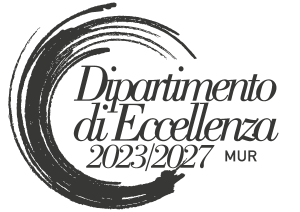The Rise of the “New Depression” in the Harper’s essay and in The Corrections by Jonathan Franzen
DOI:
https://doi.org/10.13136/2281-4582/2025.i25.1546Parole chiave:
Jonathan Franzen, Harper's essay, The Corrections, Realismo depressivo, realismo tragicoAbstract
Nel suo saggio del 1996 "Perchance to Dream. In the Age of Images, a Reason to Write Novels,” Franzen ha lanciato un accorato appello affinché la letteratura di alto profilo creasse le condizioni per rispondere alla sfida rappresentata dalla cultura forzatamente 'terapeutica' del tardo ventesimo secolo. Tale cultura, spiega Franzen, si caratterizza per la tendenza a medicalizzare problemi psicologici ed emotivi che, un tempo, sarebbero stati considerati unicamente sul piano spirituale. Al contrario, nella cultura descritta da Franzen, essi sono considerati come sintomi da curare, preferibilmente attraverso un rimedio biochimico dagli effetti istantanei. Questo fenomeno ha finito per determinare un'eccessiva dipendenza da antidepressivi di nuova generazione, in primo luogo il Prozac. Tali circostanze sono al centro del terzo romanzo di Franzen, The Corrections, testo attraverso cui l'autore non solo realizza un'efficace parodia delle tendenze culturali predominanti nella temperie, ma illustra, altresì, i concetti di "realismo depressivo" e "realismo tragico" che caratterizzano la sua Weltanschauung.
Riferimenti bibliografici
Ahn, Sunyoung. “The End of History in Jonathan Franzen’s The Corrections.” The Explicator 81.3-4 (2023): 155-158.
Annesley, James. “Market Corrections: Jonathan Franzen and the ‘Novel of Globalization.’” Journal of Modern Literature 29.2 (2006): 111-128.
Antrim, Donald. “Jonathan Franzen by Donald Antrim.” Bomb 1 October 2001. https://bombmagazine.org/articles/2001/10/01/jonathan-franzen/. Last visited 17/10/2024.
Birkerts, Sven. The Gutenberg Elegies: The Fate of Reading in an Electronic Age. Boston: Faber and Faber, 1994.
Bovet, Émilie, et al. “Neuroscience Examined by the Clinical and the Social Science: Crossed Perspectives.” Revue d’anthropologie des connaissances 7.3 (2013): a-n.
Burn, Stephen. Jonathan Franzen and the End of Postmodernism. New York: Continuum Literary Studies, 2008.
Carroll, Joseph. “Correcting The Corrections: A Darwinian Critique of a Foucauldian Novel.” Style 47.1 (2013): 87-118.
Consonni, Stefania. “Chemistry and the Novel: Jonathan Franzen’s The Corrections and Contemporary Epistemology” The Knowledge of Literature. Vol. VII. Edited by in Angela Locatelli. Bergamo: Sestante, 2008. 47-63.
Dix, Andrew, Brian Jarvis and Paul Jenner. The Contemporary American Novel in Context. New York: Bloomsbury, 2011.
Dujaković, Stela. “Masculinity Beyond Repair: Aging, Pathology, and the Male Body in Jonathan Franzen’s The Corrections.” Anafora 6.2 (2019): 469-490.
Eil, Philip. “The Book that Changed the Way We Talk about Depression.” The Week 10 December 2019. https://theweek.com/articles/882266/book-that-changed-way-talk-about-depression. Last visited 24/06/2024.
Foucault, Michel. “The Crisis of Medicine or the Crisis of Antimedicine?” Foucault Studies 1 (2004): 5-19.
Franzen, Jonathan. “Perchance to Dream: In the Age of Images, a Reason to Write Novels.” Harper’s Magazine April 1996: 35-55.
---. Strong Motion. New York: Norton, 1992.
---. “The Art of Fiction.” Interviewed by Stephen Burn. The Paris Review 207 (2010). www.theparisreview.org/interviews/6054/the-art-of-fiction-no-207-jonathan-franzen. Last visited 28/06/2024.
---. The Corrections. 2001. London: Harper Collins, 2022.
---. The Discomfort Zone: A Personal History. New York: Farrar, Straus and Giroux, 2006.
---. The Twenty-seventh City. New York: Farrar, Straus and Giroux, 1988.
---. “Why Bother?”. How to Be Alone. London: Fourth Estate, 2002. 55-97.
Galow, Timothy W. Understanding Jonathan Franzen. Columbia: The University of South Carolina Press, 2023.
Gergen, Kenneth J. “The Neurobiological Turn in Therapeutic Treatment: Salvation or Devastation?” Critical Psychotherapy, Psychoanalysis and Counselling. Edited by Del Loewenthal. London: Palgrave Macmillan, 2015. 53-73.
Goleman, Daniel. “A Rising Cost of Modernity: Depression.” The New York Times 8 December 1992: C1.
Hutchinson, Colin. “Jonathan Franzen and the Politics of Disengagement.” Critique: Studies in Contemporary Fiction 50.2 (2009): 191-207.
Jacobson, Kristin J. Neodomestic American Fiction. Columbus: The Ohio State University Press, 2020.
Jones, Edward G. and Lorne Mendell. “Assessing the Decade of the Brain.” Science 284.5415 (1999): 739.
Kakutani, Michiko. “Books of the Times: A Family Portrait as Metaphor for the 90’s.” The New York Times 4 September 2001, E6.
Karen, Robert. “Shame.” The Atlantic February 1992. https://www.theatlantic.com/
magazine/archive/1992/02/shame/670008/. Last visited 16/10/2024.
Kaysen, Susanna. Girl, Interrupted. New York: Turtle Bay Books, 1993.
Kramer, Peter D. Listening to Prozac. New York: Penguin, 2023.
Kutchins, Herb and Stuart A. Kirk. Making Us Crazy: DSM – The Psychiatric Bible and the Creation of Mental Disorders. Los Angeles: The Free Press, 1997.
Lawlor, Clarke. From Melancholia to Prozac: A History of Depression. Oxford: Oxford University Press, 2012.
Londoño, Diego E. “From Freud’s Cocaine to Kramer’s Modern Prozac: A Look at an Epistemic Rupture from a Lacanian Perspective.” Recherches en psychoanalyse 17.1 (2014): 35a-45a.
Martindale, Wayne and Jerry Root. The Quotable Lewis. Wheaton: Tyndale House Publishers, 2012.
Potier, Jérémy. “An Interview with Jonathan Franzen.” Transatlantica 1 (2017). http://journals.openedition.org/transatlantica/8943. Last visited 25/06/2024.
Quirk, Kevin. “Correcting Oprah: Jonathan Franzen and the Uses of Literature in the Therapeutic Age.” The Oprah Affect: Critical Essays on Oprah’s Book Club. Edited by Cecilia Konchar Farr and Jaime Harker. Albany: State University of New York Press, 2008. 253-276.
Requena Pelegrí, Teresa. “Negotiating a Masculine Bloc: Jonathan Franzen’s The Corrections.” Revista Canaria de Estudios Ingleses 66 (2013): 99-110.
Rostami, Maryam. “A Comparative Study of Adlerian Masculine Protest in Jonathan Franzen's The Corrections and Freedom: Individuality Despite Similarity.” Theory & Practice in Language Studies 8.6 (2018): 640-649.
Slater, Lauren. Prozac Diary. New York: Random House, 1998.
St. John, Edward B. “Review of The Corrections.” Library Journal 126.13 (2001): 160.
Styron Willian. Darkness Visible: A Memoir of Madness. New York: Vintage Books, 1992.
---. “Why Primo Levi Need Not Have Died.” The New York Times 19 December 1988: A17.
Thiemann, Anna. Trauma, Neuroscience and the Contemporary Literary Imagination. New York: Routledge, 2017.
Thompson, Tracy. The Beast: A Reckoning with Depression. New York: G. P. Putnam’s Sons, 1995.
Toal, Catherine. “Corrections: Contemporary American Melancholy.” Journal of European Studies 33.3-4 (2003): 305-322.
Tseris, Emma and Bruce Cohen. “Cosmetic Pharmacology.” The SAGE Encyclopaedia of Pharmacology and Society. Edited by Sarah E. Boslaugh. London: Sage, 2016. 420-423.
van Praag, Herman Meïr. “The Impact of Classification on Psychopharmacology and Biological Psychiatry.” Dialogues on Clinical Neuroscience 1.3 (1999): 141-151.
Wood, James. “What the Dickens.” The Guardian 9 November 2001. https://www.theguardian.com/books/2001/nov/09/fiction.reviews. Last visited 22/06/2024.
Wurtzel, Elizabeth. Prozac Nation: Young and Depressed in America. Boston: Houghton Mifflin, 1994.
Dowloads
Pubblicato
Fascicolo
Sezione
Licenza
Copyright (c) 2025 Simona Porro

Questo volume è pubblicato con la licenza Creative Commons Attribuzione 4.0 Internazionale.
Iperstoria è una rivista accademica ad accesso libero.
a. Gli autori e le autrici detengono il copyright e danno alla rivista il diritto per la prima pubblicazione con il contributo sotto licenza Creative Commons BY (4.0) che permette di condividere l’articolo con il riconoscimento della prima pubblicazione su questa rivista.
b. Gli autori e le autrici possono inoltre stabilire ulteriori direttive contrattuali per la distribuzione non esclusiva della versione del contributo pubblicata sulla rivista (es. ripubblicarlo in archivi istituzionali o in un volume), con uno specifico riconoscimento della prima pubblicazione su questa rivista. Chiediamo pertanto agli autori e autrici di contattarci nel caso di eventuali ripubblicazioni.






